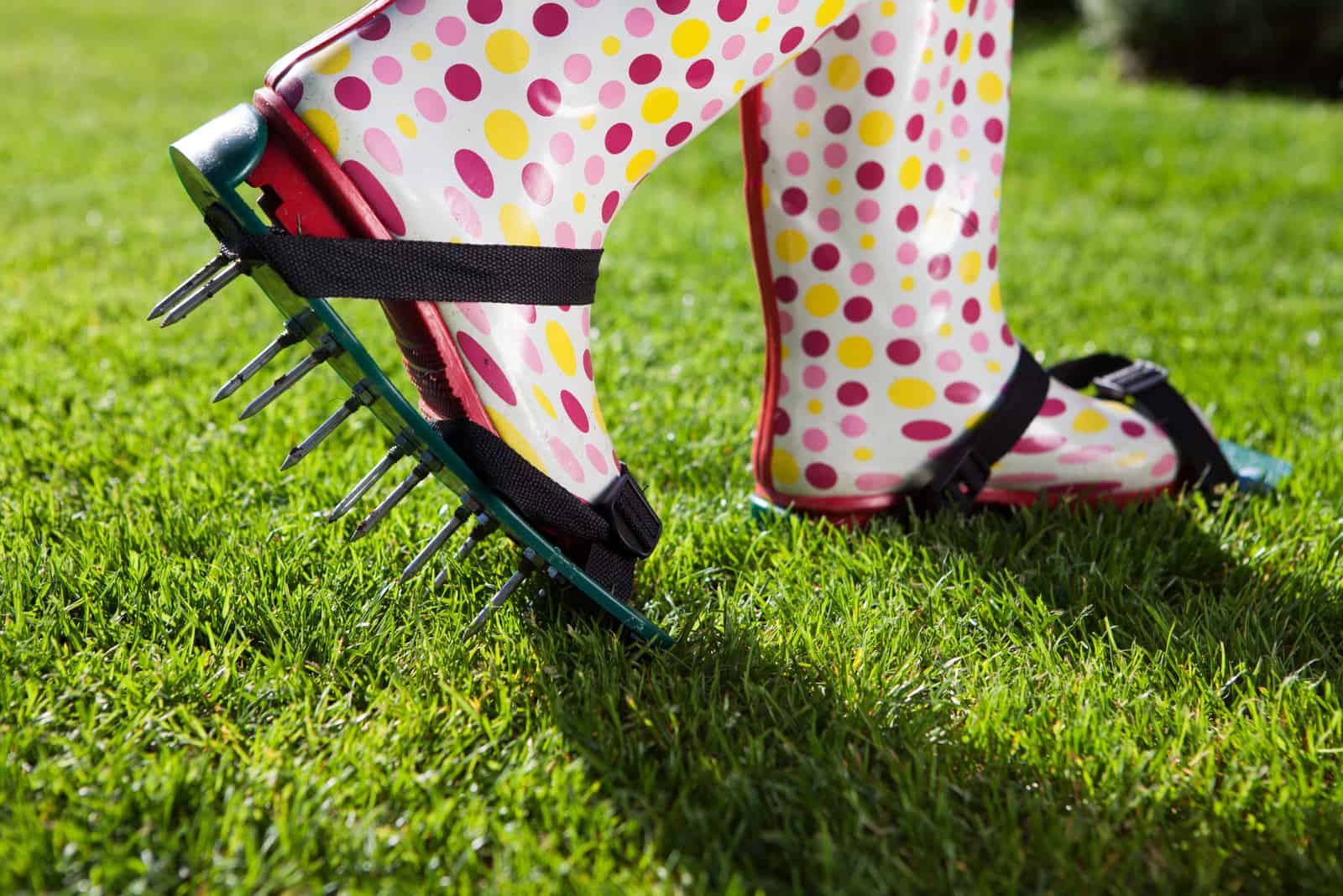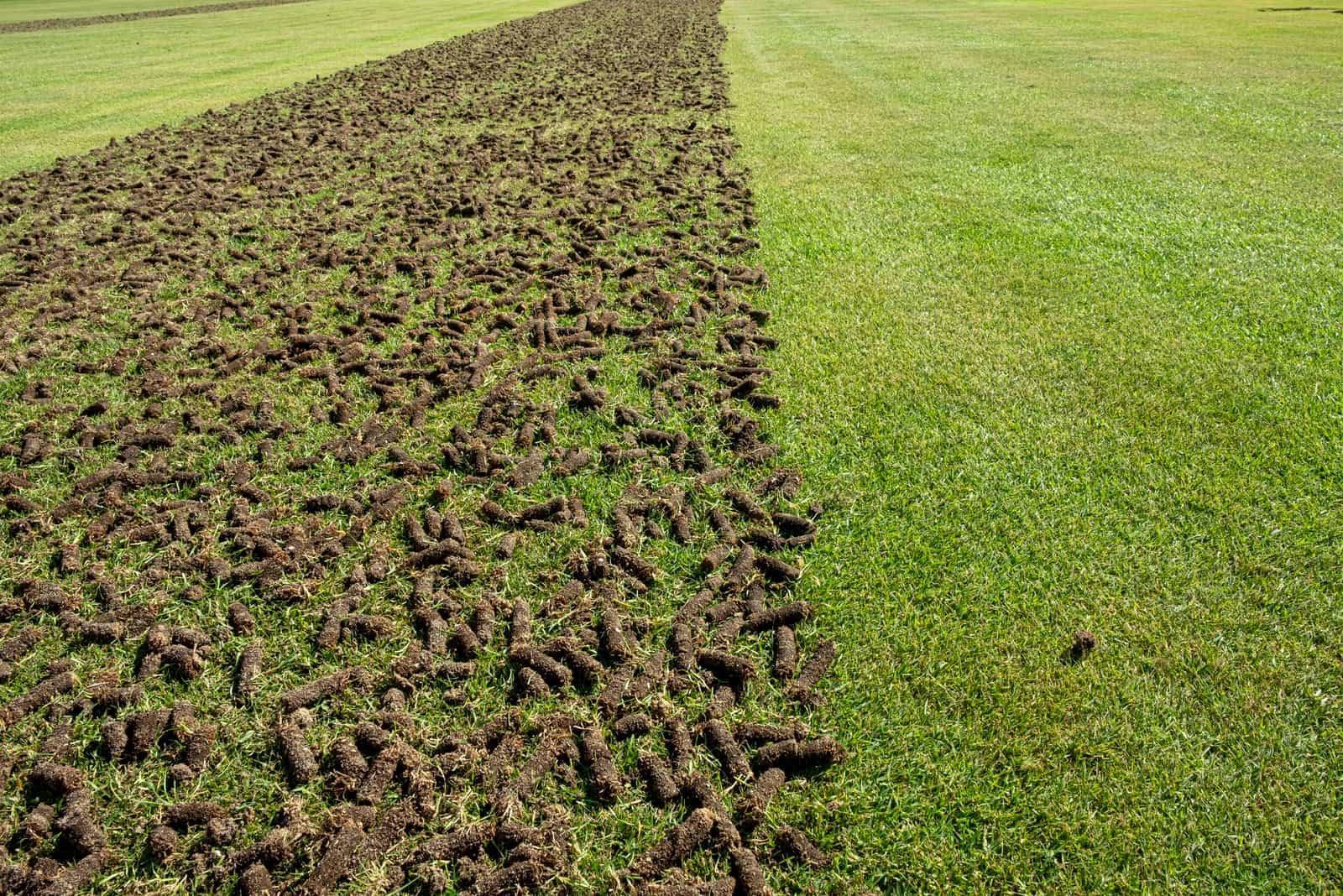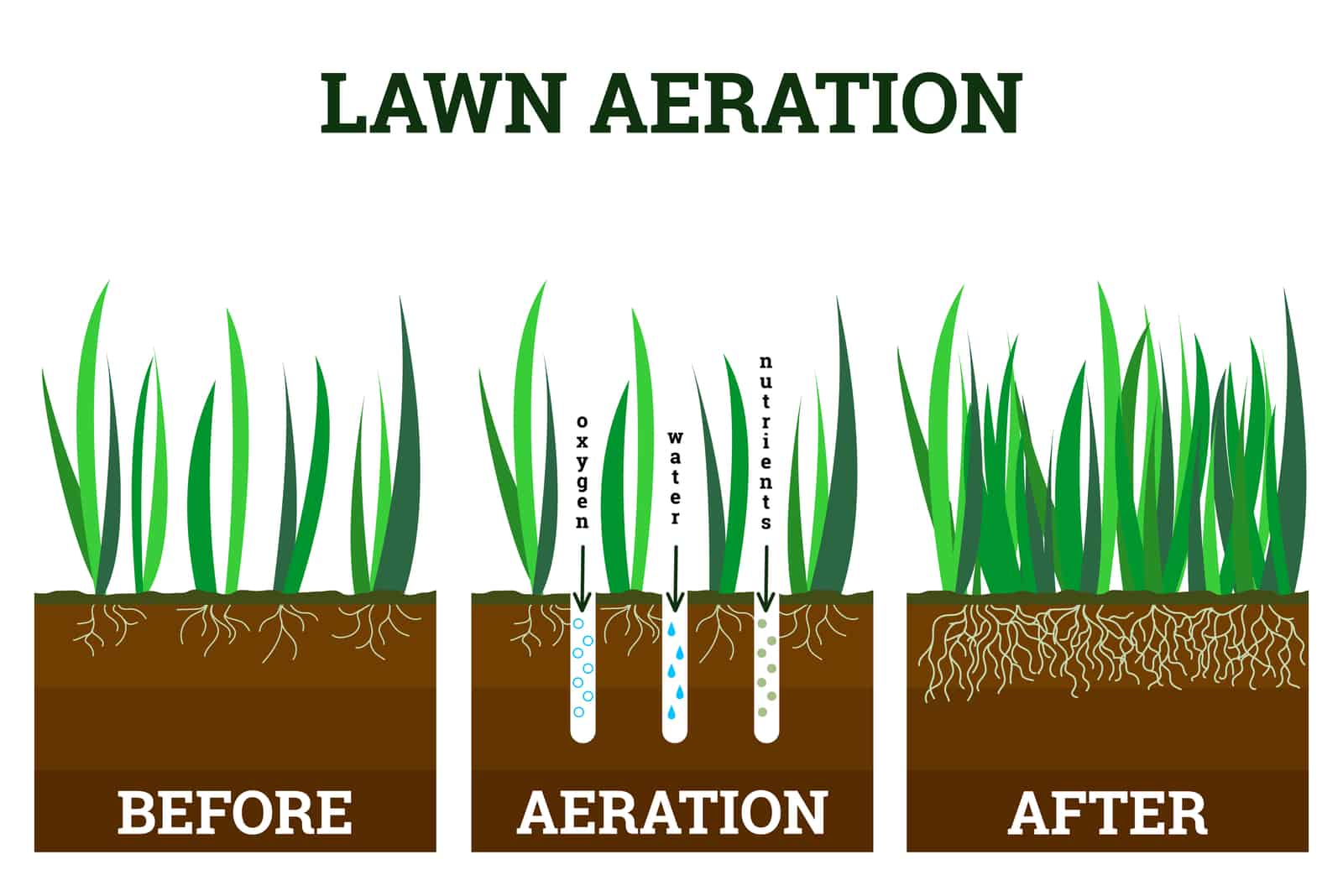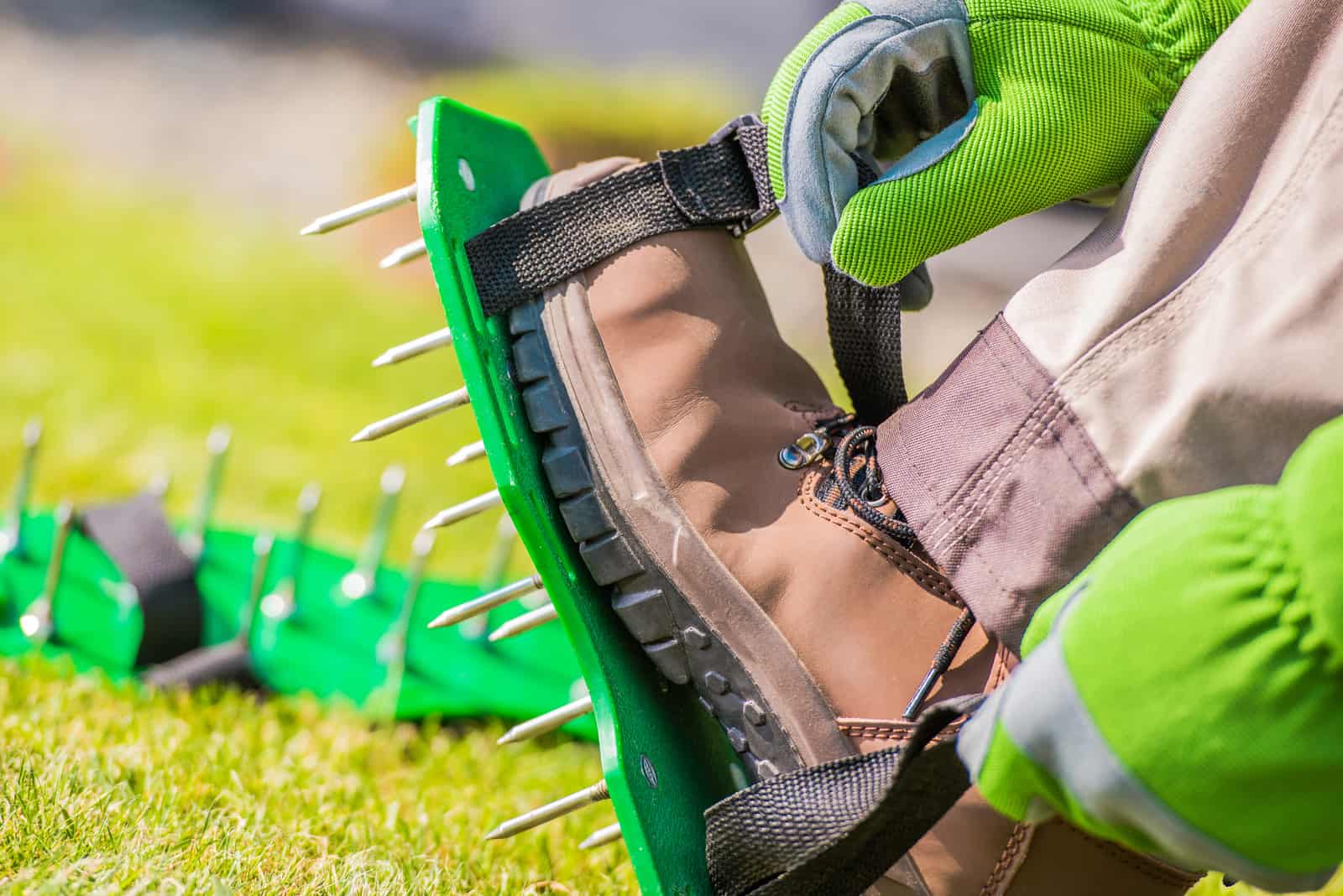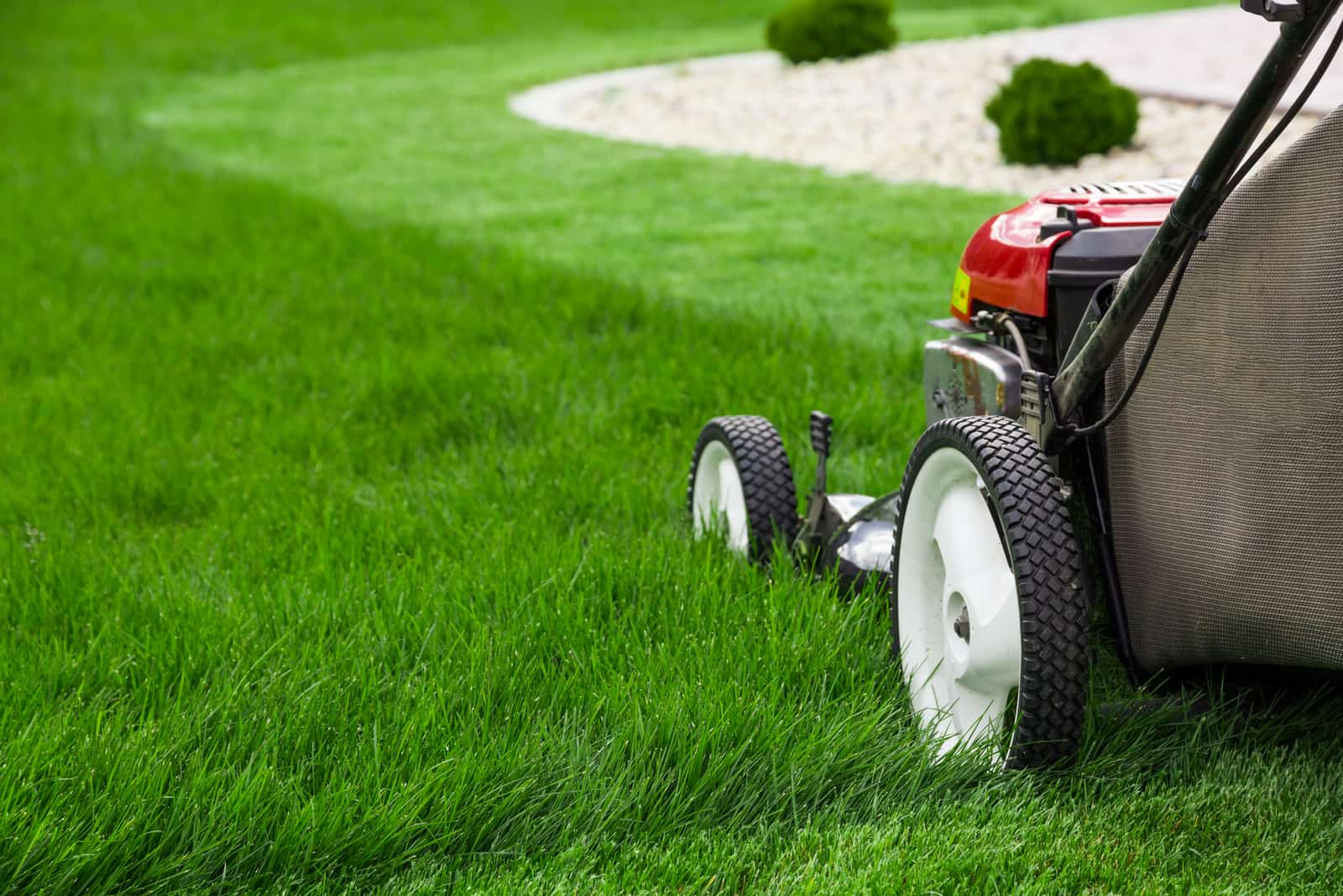Having the best lawn in the neighborhood isn’t the easiest thing to achieve, but it’s certainly possible!
One of the most essential steps of lawn care that is often skipped, is aeration. Aerating your lawn is not an easy job, but it definitely pays off!
Aeration allows the air to reach the grass roots and also improves nutrient and water absorption. After aeration, your lawn is damaged in a way because there are small holes all over it, but there are a few tips and tricks on what to do after aerating lawn so you can benefit more from aeration.
Whether you decide to call a lawn maintenance service and let them do the job, or you want to take matters into your own hands, read on to learn lots of tips and tricks to help you have the lushest and most vibrant lawn ever!
What To Do After Aerating Lawn
Once you’ve seen your lawn after aeration, you will be wondering whether it was such a good idea. I mean, there are holes literally everywhere!
Don’t worry, because it was a great idea! You’ll soon have a thicker lawn with healthier grass that is weed-free.
Immediately after aeration, you will have less compact soil and thatch that is completely broken up. There are a few tricks to make the most out of aeration, which include letting the plugs of soil break down naturally, applying fertilizers and weed treatment, overseeding, and getting your watering schedule on track.
Read on to learn more about each method.
Let The Plugs Of Soil Break Down
After the aeration process, your lawn will be covered with plugs of soil. The best thing you can do is to let them break down naturally. It will take about three weeks for them to decompose and gradually work their way back into the soil.
To be honest, this isn’t the prettiest view, but it won’t take too much time for your lawn to look better than ever!
You can speed up this process naturally by consistently watering and mowing the lawn, and you can also rake these plugs to break them down then pick the leftovers and apply them to the lawn. I would recommend you avoid this though.
Apply Fertilizers
Now the soil in your lawn is disrupted and not as compact, it’s an ideal time to apply fertilizer. They will be able to travel deep into the ground to reach the grass roots and provide them with all the necessary nutrients.
I would recommend you apply organic fertilizer that contains nitrogen, though this is up to you and the grass type of your lawn.
Fertilizers will also protect your new grass from extremely hot climates during the summer in case you aerated in early summer.
Overseeding
The aeration machine leaves holes in the soil that are evenly spaced about 3 inches apart. This is the perfect opportunity to overseed your lawn, especially if you have a thin lawn with bare spots.
Another great thing is that these holes are deep enough to let your seeds establish roots, and also to protect them from birds and other predators (the applied fertilizers will even encourage new growth and development!).
You can use a spreader to plant the seeds or do it by hand. You should water your new seeds frequently because they need moist soil. Most grass seeds germinate two weeks after planting. However, several different factors can prevent your seeds from germination.
Apply Weed Treatments
Homeowners that want to have a healthy lawn must fight countless battles against weeds. There is no other way than to apply different herbicides that will prevent their growth.
Nowadays, you can use pre-emergent weed control to kill the weeds before they sprout!
Unfortunately, it can have the same effect on your freshly planted seeds and prevent them from growing and sprouting. In this case, don’t apply any type of weed control either 4 weeks after planting the seeds or 6 weeks before planting, as it can have the same effect.
However, if you don’t plan to overseed your lawn then you can go ahead and apply herbicides! These tiny holes will allow any type of weed killer to penetrate deep into the soil, prevent their growth, and make your life a lot easier!
Watering Schedule
Watering your lawn after aeration is slightly different from regular watering. Instead of thoroughly watering your lawn for about 45 minutes, you should do it lightly for about 20 minutes.
This is done to prevent water from building up in the holes left behind after aeration.
Watering should be done after overseeding and fertilizing. It will encourage the root growth of your new seeds and also help you to establish a regular watering schedule. This is especially important if there is high foot traffic that makes your soil too compact and unable to properly absorb water (another reason why you should aerate).
To Mow Or Not To Mow?
There is an ongoing debate among gardeners about whether or not you should mow a lawn after aeration. To be honest, I mowed my lawn and nothing bad happened, but when I told my other gardener friend, he said that it was the dumbest thing ever!
After doing some research and talking with some other gardeners, I agree that you should never mow right after aeration.
You should mow the lawn to a certain height before aeration, and then wait a week after aeration to use your lawn mower and do it again. If you planted a new seed, then wait about 4 weeks to let it grow.
Let Your Lawn Rest
Your lawn will need to recover after aeration, so you should avoid mowing for a little while. Ideally, you should wait for the grass to grow about 3.5 inches tall before mowing it again, though you can do it a week after aeration.
Another thing that should be avoided is walking on a freshly aerated lawn, which can make it compact again. This is the main reason we were aerating the lawn in the first place, so make sure to let everyone know!
What Is Lawn Aeration?
As we already mentioned, lawn aeration is the process of poking holes in the soil to improve soil compaction and allow air circulation, as well as provide easier water and nutrient uptake.
It’s a crucial step in landscaping and lawn maintenance, especially if you have excess thatch buildup that completely covers the topsoil. Thatch is basically a layer of organic matter such as grass clippings and leaves. In some cases, a thin thatch layer is good for insulation against extreme temperatures and even moisture.
However, more than one inch of thatch can pose issues like excess water build-up in the soil, which disrupts normal air circulation and basically suffocates your lawn. In addition to this, it also makes your lawn susceptible to pests and various turf diseases that can destroy it.
When it comes to aerating your lawn, there are two options: call a lawn maintenance service or rent the machine and do it yourself.
There is another method called “spiking”, which basically means poking holes in your soil. This can be done on a small lawn, although it’s not reliable, especially in cases with large thatch build-up.
It would be best if you dethatch before doing core aeration to get the best results and spend your summer on the most beautiful lawn ever!
Dethatching vs Aeration
Dethatching is the process of removing the thatch that has accumulated on the soil and is preventing the grass from absorbing vital nutrients. In cases of excessive thatch build-up, it is best to dethatch the lawn before aeration.
This way, the aerator machine can penetrate the soil much more deeply, allowing for better airflow and water and nutrient uptake.
During aeration with thatch on the topsoil, the aerator will primarily focus on breaking down the thatch before penetrating the soil. If there is only a thin layer of thatch on your lawn, then you don’t need to dethatch before aeration.
Both of these lawn care practices should be done to get rid of a thin lawn.
Benefits Of Lawn Aeration
Aeration primarily focuses on improving the airflow in your soil — it isn’t called “aeration” for no reason.
A lawn with a lot of foot traffic can easily become compacted, which prevents normal air circulation in the soil. Don’t even get me started on lawn car traffic, you might as well not bother growing a lawn in the first place!
Grass roots need oxygen to grow big and strong so they can establish a much more vibrant and healthy lawn. If you have clay soil that is already heavy and compact, then aeration is exactly what your lawn needs.
After aeration, you will have the chance to overseed your lawn and make it look thicker because there are already plenty of evenly spread holes in the soil, which are the perfect environment for new seeds and root system development.
Added fertilizers and weed control don’t runoff as quickly as they normally would because they are now applied deeply in the soil.
You will also get rid of thatch and prevent its accumulation for a long period of time.
Even though aeration seems like a ton of hard work, trust me it is totally worth it! The grass will always be greener on your side of the fence after aeration. 🙂
How To Aerate A Lawn
There are a few things that you should take into consideration before aerating your lawn:
• First, make sure that your lawn really needs aeration (there are a few signs that your lawn desperately needs aeration).
• After that, you have to figure out what time of year is best for you to aerate your lawn (this depends on the type of grass in your lawn).
• Finally, you should decide whether you want to call a lawn maintenance service or do the aeration yourself (all you need is the aeration equipment).
Let’s get started!
Signs Your Lawn Needs Aeration
Though it is often an essential step in a lawn care guide, there are still some lawns that don’t actually need aeration (and you don’t want to expose your lawn to this much stress).
Aeration is required if you have a heavy soil type, like clay, which becomes compacted easily, especially if you let kids and pets run around on the lawn all day long.
High foot traffic and car traffic can also make your soil more compact.
Another obvious sign is thatch build-up. If you notice that the layer of thatch is getting bigger than one inch, then it’s time for dethatching and aeration!
You can also conduct a little soil test to see whether your lawn needs aeration. Dig out a six-inch deep part of your lawn, and if the grass roots barely spread one to two inches into it, it’s likely your soil is too compact.
If you are not up to digging, you can do the test with a screwdriver instead. Water the lawn a day before testing, then push a screwdriver into the soil — if it easily penetrates 2 to 4 inches deep, then you don’t need aeration. Otherwise, you need to aerate your lawn. Do this in a few different spots to be sure.
Pro tip: If you have planted grass seeds or installed new sod, avoid lawn aeration during the first year after planting or installation.
When To Aerate Your Lawn
The best time to aerate your lawn would be during the growing period so it can recover quickly. This actually depends on the grass type of your lawn. If you have cool-season grasses, then you will probably want to aerate the lawn in early fall, while warm-season grasses should be aerated in spring or early summer.
If your lawn has adequate loose soil without too much foot traffic, aeration can be done once every 2 to 3 years. I would recommend you rent an aerator instead of buying one in this case as it’s much cheaper!
However, if your lawn is exposed to a lot of traffic and has clay soil, then annual aeration is essential.
Spring/Early Summer Aeration
This type of aeration is suitable for warm-season grasses. I usually aerate my lawn in May, though you can do it in June as well. Either way, you should aerate before applying pesticides or overseeding.
Some warm-season grasses include:
• Bermuda grass
• Bahiagrass Argentine
• Centipede
• Floratam St.Augustine
• Bahiagrass Argentine
If you’ve been wondering what to do after aerating lawn in spring, it’s actually the perfect time to apply a pre-emergent weed killer, especially if you’ve previously had trouble with weeds. You can also overseed and apply fertilizer, though you should avoid applying weed killers if you plan to overseed.
Early Fall Aeration
Cool-season grasses prefer aeration during early fall — from late August through to September.
This is an ideal period because your grass is still actively growing, so it won’t have any issues recovering from being poked numerous times!
Some cool-season grasses include:
• Ryegrass
• Tall Fescue
• Bentgrass
• Bluegrass
• Fine Fescue
• Creeping Red Fescue
You can still overseed your lawn even after aerating it in early fall, just make sure not to apply any weed killer!
What To Do Before Aeration
The first thing you should do before aeration is mowing, because short grass makes the job a lot easier. After that, you should water the lawn thoroughly a day or two before aeration.
Watering will soften the soil and let the tines on the aerator penetrate the soil smoothly. Dry soil is stiff and could cause some issues.
Mark any sprinklers, cables, or other types of obstacles that an aerator might run into. This will avoid damaging the aerator and the sprinklers.
It is recommended to aerate the lawn in both directions, and ideally you should have about 20 to 40 holes per square foot.
Lastly, you should avoid aeration after heavy rain because the soil could be too wet, so mud would stick to the tines or fall apart.
How To Aerate Your Lawn
As we already mentioned, you can do it yourself or hire a professional, it’s totally up to you. If you are willing to do the hard work, go for it!
However, I must warn you that the larger the lawn is, the harder it will be.
Lawn maintenance services offer a lot of options regarding aeration, and they will thoroughly analyze your lawn and give you some great advice.
If you are considering doing it all by yourself, here is some of the equipment you can choose:
• Slicing aerators — they contain sharp blades that rotate and literally slice your soil. They are able to penetrate through grass and thatch, making pathways in the soil that allow easier flow of air, water, and nutrients.
• Spike aerators — they contain spike-like tines that create small holes in the soil. The famous spike aerator sandals are usually used in this case, however, they are only suitable for small lawns. One of the disadvantages is that the spike machine can press the soil around the holes and end up making it more compacted.
• Core or plug aerators — they remove small plugs of soil from the lawn, leaving three inch deep holes that are perfect for overseeding. This is the most reliable method and is usually performed by professionals. These holes also improve airflow and create easier access to fertilizers and herbicides.
Check out this video on how to aerate your lawn using spike aerator sandals:
Frequently Asked Questions
1. Can you walk on the lawn after aeration?
No, walking on the lawn after aeration is not recommended, especially if you have just sowed new grass seeds. Your lawn is fragile after aeration, and walking is one of the reasons it needed aeration in the first place.
I would suggest you wait about a month after aeration before walking on your lawn again.
2. What is the difference between core aeration and plug aeration?
The truth is… none!
There is no difference between core aeration and plug aeration as these two terms refer to the same thing and are used interchangeably.
Spike aeration and core aeration are the two types of aeration that differ based on their methods and performance.
3. How long does it take grass to recover from aeration?
This depends on how you take care of your lawn after aeration. With proper lawn care, your grass will take about 4 weeks to recover and look as good as new! If you immediately start mowing or walking on your aerated lawn, it will take much more time to recover.
4. How long should you wait to seed after aeration?
You don’t have to wait for too long to start overseeding your aerated lawn — it should be done in the first 48 hours after aeration.
In fact, fertilizers and weed treatments should be applied in a matter of days or immediately after aerating the lawn.
To Sum Up
Mowing, fertilizing, watering, and now aerating,… taking care of your lawn seems like an endless job. It may take a lot of time and energy, but hard work pays off!
There is no better feeling than sipping lemonade on a hot summer day on your beautiful lawn while watching the flowers blooming and decorating your garden during spring.
If you have compact soil and a thick thatch layer on top of it, then aeration is a necessary step in your lawn care. Luckily, you can hire a professional to do the job in a day or do it yourself!
If you were wondering what to do after aerating lawn because you are left with numerous holes in the soil, follow these tips and tricks to improve your lawn and make the most out of aeration!
Let the grass breathe!
Like this post? Share or pin it for later!

